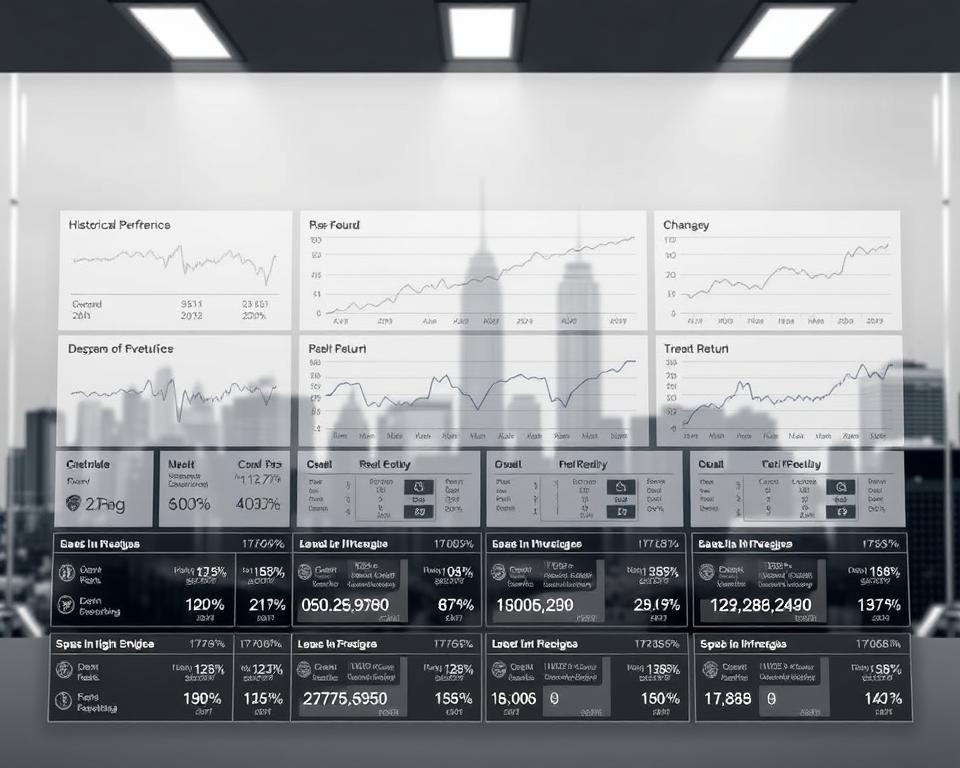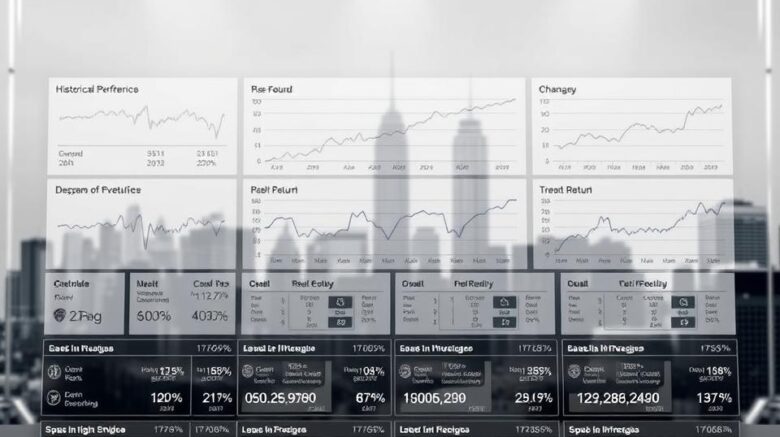CLO Equity Investing Insights – A Guide
Over 60% of institutions recognize CLOs as essential to their investment mix—did you know that? A look into CLO sector investing uncovers the reasons behind its growing allure. Investors enjoy the prospect of compelling yields, steady cash flows, and risk spreading. These benefits help protect against economic ups and downs.
In this guide, we’ll dive into the details of CLO equity. We cover why experienced managers matter, what makes CLO equity funds distinct, and how structured finance players fit in. Ultimately, you’ll see why CLO equity is an enticing option for those looking to improve their holdings.
- CLOs provide robust portfolio diversification to large investors.
- CLO equity’s cash flow structure can yield compelling returns.
- Experienced CLO managers play a critical role in performance outcomes.
- Investing in CLO equity can buffer against economic downturns.
- CLO equity funds are increasingly favored among alternative asset investors.
Getting Started with CLO Equity
A deep dive into CLOs uncovers their significance in today’s markets. They pack together senior, below-investment grade loans into one product. They make up a significant part of the $1.4 trillion structured credit market. Market participants want to know exactly what CLO equity entails.
The equity tranche captures leftover cash once all liabilities are satisfied. It provides an opportunity for strong yields when rates are low. The floating-rate nature of CLOs also serves as a shield against rate volatility. This makes CLOs an attractive investment option.
Grasping the structure of CLOs and the specifics of CLO equity is key to assessing their returns and risks. My goal is to clarify these concepts. I’ll illustrate why they matter for portfolio decisions.

The Case for CLO Equity
These funds provide a novel diversification opportunity. Investors are drawn by proven performance and yields. It appeals to investors seeking stable returns amidst market volatility, making CLO equity a compelling option.
High Returns in CLO Equity
CLO equity’s return is impressive, with double-digit annualized cash-on-cash returns common. Reinvestment phases can push yields into the mid- to high-teens. This makes CLO equity a top choice for those seeking high yields without compromising on quality.
CLO Equity’s Track Record
Its track record under various climates underscores its robustness. Rather than delayed payoffs, it delivers regular quarterly income, avoiding a J-curve. This makes it a reliable choice for balancing risk and seeking attractive returns, solidifying its place in the financial market.
How CLOs Are Built
Their complexity belies the attractive opportunity they offer. The payment waterfall governs how each tranche receives cash flows. Each tranche has its own risk and return profile. Senior tranches, backed by high-quality collateral, receive payments first. Junior tranches bear greater risk in exchange for elevated yields.
Senior secured loans are a key component in CLOs. In insolvency, first-lien loans claim payments ahead of all others. This characteristic makes CLOs less risky than other corporate debt, appealing to investors seeking a balanced risk-reward profile.
Defining Features of CLO Equity
One hallmark of CLO equity is its distinctive cash distribution pattern. Early, sizable cash payouts accelerate return of capital. This is in contrast to other high-return options, like private equity. Such dynamics cement CLO equity’s niche in credit markets.
Cash Flow Dynamics of CLO Equity
The cash flow dynamics of CLO equity investments are key to their appeal. They produce hefty early distributions, giving investors quicker payback. By launch, distributions often outpace more conventional assets. Large investors value liquid early gains coupled with ongoing upside.
Adapting to Market Shifts
Active management allows CLO funds to pivot with market trends. They rebalance holdings as conditions shift. This active management preserves value and allows CLO equity to thrive in changing market conditions. This flexibility highlights the robustness of equity tranches.
Diversification Benefits of Investing in CLOs
Investing in CLOs brings significant diversification benefits to my portfolio. CLO funds expose me to a wide range of corporate loans, lowering the risk of credit defaults. Their returns often move independently of equities and bonds.
CLO equity firms stand out due to their active management. They monitor and adjust investments to achieve superior performance, adapting to market changes. This adaptability is key to managing risks and ensuring my investment’s resilience against economic shifts.
The diverse assets in CLOs not only spread risk but also stabilize cash flow. This is attractive for those seeking consistent income in volatile markets. Investing here helps me implement a more balanced portfolio.
Evaluating Risks in CLO Equity
Understanding risk elements is crucial before investing in CLO equity. The economic landscape shifts constantly, making it critical for credit risk investors to stay alert to these risks. They must be aware of the vulnerabilities tied to these investments.
Loan and Collateral Hazards
Loan performance and collateral strength define core risks. Recessions often spike credit losses. If the economy slows, leveraged loans may struggle. Thus, equity distributions risk being cut when loan values fall.
Equity investors stand to lose in such stress scenarios. I scrutinize tranche credit metrics and collateral support levels rigorously. That way, I understand what’s at stake.
Market Risk in CLO Equity
Liquidity is another major risk for CLO equity investors. During turmoil, buyers for CLO equity can dry up. Selling under stress may force steep discounts. Market sentiment can also impact valuations, making them drop in tough economic times.
It’s essential to monitor market conditions closely and understand their impact on my portfolio. Choosing a skilled CLO manager who prioritizes principal protection and maintains high credit quality can help reduce these risks.
Tailoring approaches helps meet return targets within risk limits. There are multiple paths to enter the CLO equity space. Consider these popular structures:
- In-house Equity Vehicles: They focus on selected equity tranches. They allow me to invest in a diversified portfolio, curated by seasoned managers.
- Direct Deal-by-Deal Investments: It permits targeted stakes in specific transactions. It offers more control over my choices but requires deep market knowledge.
- Multi-Asset Credit Funds: They blend equity tranches with other debt products. This creates a balanced portfolio that may reduce risk.
Each strategy has its benefits and considerations. For example, captive equity funds are great for newcomers to CLO investments. They offer professional management and diversification. Direct investments, while potentially rewarding, require a deep understanding of the market. Blended credit vehicles combine strengths of various instruments.
By examining these CLO investment strategies, I can improve my portfolio. It matches my objectives, capacity, and comfort with risk.
The Role of CLO Managers in Performance
Manager expertise underpins equity performance. Their decisions in reinvestment windows often lift yields. Their engagement steers portfolios through tough markets. It sets them up to maximize gains.
Selecting an experienced manager is vital. Look for managers known for mitigating losses and refinancing adeptly. Veteran teams adjust portfolios on the fly to protect returns. Their judgment and credit selection skills uphold performance amid cycles.
Manager choice often dictates equity outcomes. Appreciating manager impact guides better investment decisions.
Comparing CLO Equity to Alternatives
In this section, we’ll explore how CLO equity compares to private equity investments and high yield bonds. Our goal is to show how it complements or competes with other options. Knowing these distinctions is key to smart allocations.
CLO Equity vs. Private Equity
Several contrasts emerge when lining up CLO equity against private equity. CLO equity provides faster payouts and tradability, whereas private equity typically ties up capital long-term.
- Risk factors: Hands-on business turnarounds in PE can amplify downside. CLOs spread risk across many loans.
- Yield Characteristics: PE can beat CLO yields over time, but CLO equity delivers steadier, high single-digit to low double-digit income.
- Time Commitment: Private equity requires a longer commitment, whereas CLO equity is more accessible through secondary markets.
CLO Equity or Junk Bonds?
How do high yield credits stack against CLO equity? They both pay interest, yet their frameworks diverge. High yield bonds have fixed interest payments and are sensitive to interest rate changes, leading to volatility.
- Distribution Benefit: Diversified loan sources spread payment risk.
- Issuer Risk: High yield bonds are tied to single entities, whereas CLOs offer a diversified asset pool.
- Yield Comparison: In strong markets, CLO equity yields often exceed junk bonds and hold up better to rate shifts.
On the horizon, CLO investing looks poised for transformation. CLO ETFs could democratize access and boost liquidity. Greater ETF flows might deepen markets and improve pricing signals.
Regulatory changes are also on the horizon, poised to significantly impact the CLO market. Regulators may enforce stricter guidelines and standardized metrics. Grasping these shifts is essential for me, as they will shape my CLO equity outlook and strategic planning.
Technological advancements in data analytics and risk assessment tools are poised to transform my evaluation of CLO opportunities. They support sharper analysis of loan pools and economic signals. They allow me to spot and act on nascent credit opportunities.
